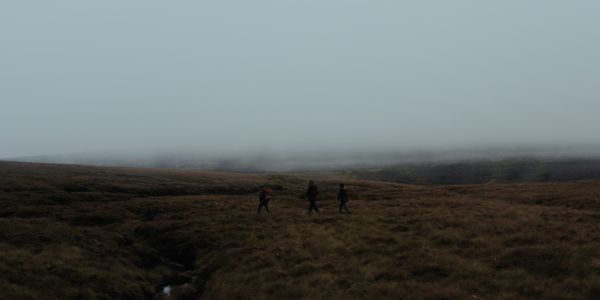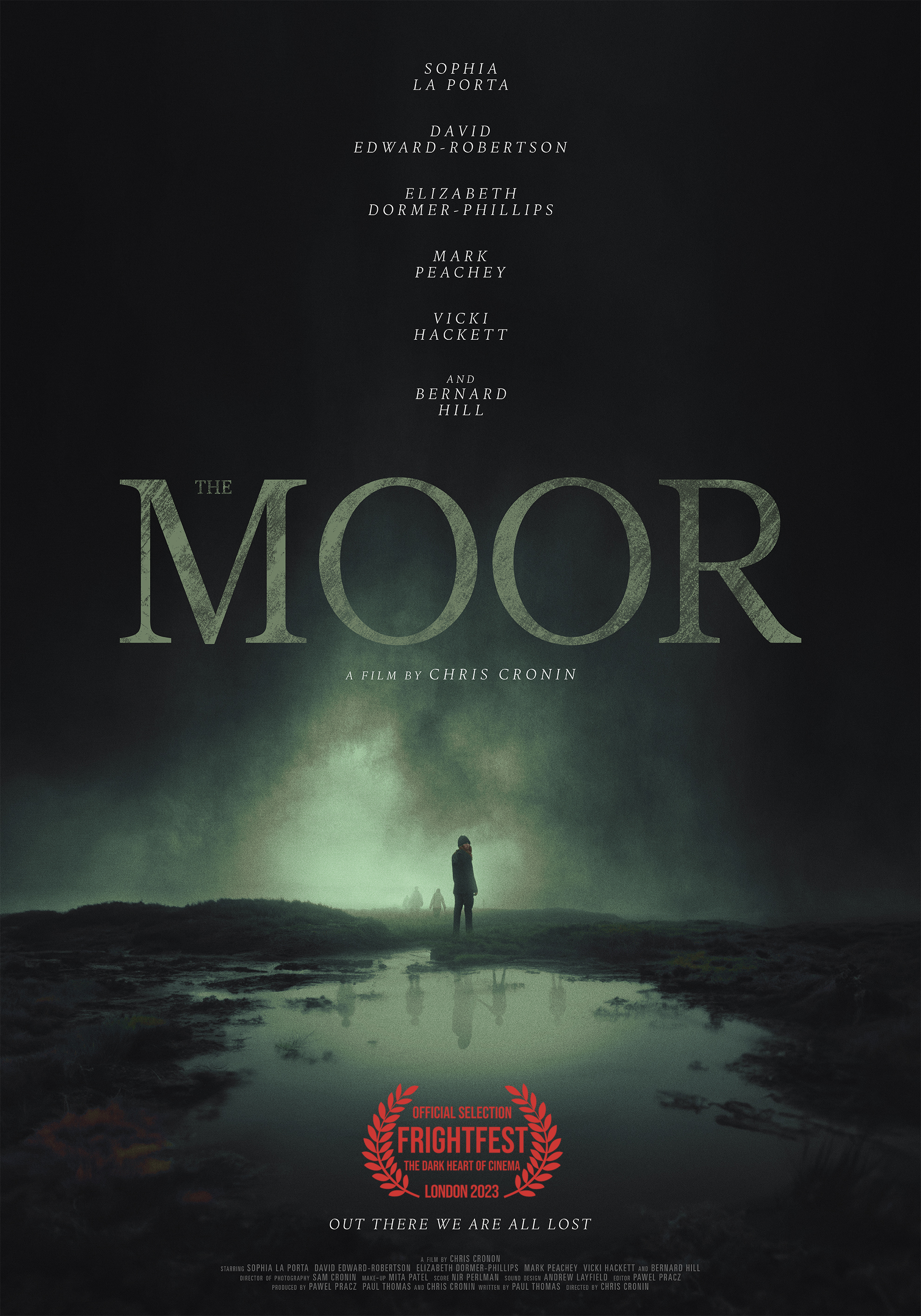Eye For Film >> Movies >> The Moor (2023) Film Review
The Moor
Reviewed by: Jennie Kermode

If you’ve spent much time around the horror film festival circuit in recent years, you’re bound to have heard the name Chris Cronin. He’s built up quite a reputation for the quality of his short works, and this, his début feature, doesn’t disappoint. Screened at 2023’s Frightfest and Abertoir, it’s a slow burning, haunting piece of work which will feel all the more potent to people who remember the real horrors associated with the region where it’s set.
The economy and precise tone of the opening scene reflect Cronin’s work in shorts. It takes place in an ordinary street of the kind found in numerous small towns and villages around the Pennines. A red-haired girl talks to a younger, blond-haired boy, persuading him to go into the nearby corner shop and create a distraction so that she can sneak in after him and steal sweets. They’re quite particular about what they want. He has his heart set on sherbet dib-dabs. The performances are bright and fresh. The accents define class and locality. In just five minutes, we get to know these kids, so that when the boy doesn’t return, we understand something particular about how that will feel to those who know him.

Red hair is, of course, often used to flag the identity of a character played by different actors across time. We encounter the girl again as an adult: Claire (Sophia La Porta), returning to her hometown after a long absence. There she meets the father of the long-vanished boy. Bill (David Edward-Robertson) has never given up his search. His obsession is written into the lines of his face, desperate yet focused, something beyond reason and yet completely understandable. She has never lied to him. He knows what happened in the shop that day. His forgiveness allowed her to heal, as much as one can do, and move on. Yet she is in no doubt that she owes him something, and now she has agreed to go out there onto the moors with him, to try to find whatever remains of little Danny.
This isn’t a recreation of events surrounding the real life moors murders, but it has some factors in common. The memory of a time when multiple children were disappearing, stamped indelibly into the fabric of the local community. A convicted killer who has, finally, agreed to help the police, but is apparently no longer able to remember where the bodies are buried. And that legacy of psychological damage. Bill gives the impression of being stranded in time. Only in the timeless environment of the moor itself, among its weather-worn Neolithic monuments with their mysterious cup and ring marks, among the hidden bogs and gullies and tracking across the scarred earth, does he have purpose.
Caught in Bill’s wake, trying to make sense of it all, Claire is enough of an outsider to create a bridge for viewers, enough of an insider to speak the language of this place. Cronin understands it too. He perfectly captures the atmosphere of the little houses clustered around the moor, the distinctive quality of the light within them, the way that they feel like a small bastion of safety against the vastness of night. Strung with mist and hazardous to the unwary, the moor is intimidating even by day, and at night it has a presence antithetical to the suburbia that makes up most of England. It is an untamed place, perhaps untameable: primal, alien, hostile. Though only a few tens of miles across, it’s rough ground, not easy to cross even for those who know the way, and it’s an easy place to get lost.
There are many ways to get lost in this film. Some viewers have expressed frustration with its slow pace, and it could stand to lose a few minutes, but not many; everything it does, and every still point, is to a purpose. The ending is perhaps a little too crude, but there are multiple ways to read it. However one interprets the whole, it succeeds powerfully as a study of human smallness, both in space and in time, and how ill-equipped we are, especially now, to understand that. Language and numbers and artificial light, reminders of the present moment, are a poor defence against the ancient darkness that is both around and within, something that existed long before us and – like the void where a child should be – will exist long after we are gone.
Reviewed on: 17 Nov 2023
















